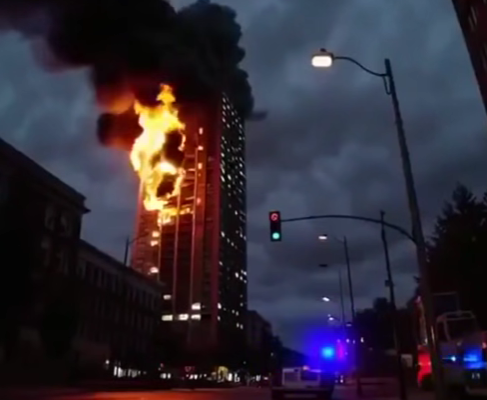As dawn broke, chaos unfolded. The massive quake jolted millions awake, toppling buildings, tearing open roads, and sending terrified residents fleeing into the streets. According to the U.S. Geological Survey, the quake’s epicenter was just 10 kilometers below the surface—shallow enough to cause catastrophic damage.
The shaking was felt far beyond the border, reaching southern China, northern Thailand, and large parts of Myanmar. In Chiang Rai and Chiang Mai, residents ran barefoot into the streets as powerful aftershocks followed.
Authorities quickly confirmed dozens of deaths and hundreds of injuries, with many still trapped beneath rubble. Rescuers worked desperately through blocked roads and widespread power outages to reach survivors.
Emergency teams set up temporary shelters and delivered urgent medical supplies. Humanitarian organizations called for international assistance as the true extent of the devastation began to emerge.
Satellite images showed entire neighborhoods flattened. Survivors huddled in open fields, waiting for help as aftershocks continued to shake the ground. Many villages remain cut off due to landslides and collapsed bridges.
Experts are now analyzing whether the quake could trigger further seismic activity in the region, already known for its volatile tectonic boundaries. The event highlights how fragile life remains in the face of nature’s immense power.
This disaster has carved a scar across three countries and left thousands in desperate need. As rescuers race against time, the world watches—and prays—that help will arrive before the next aftershock strikes.


